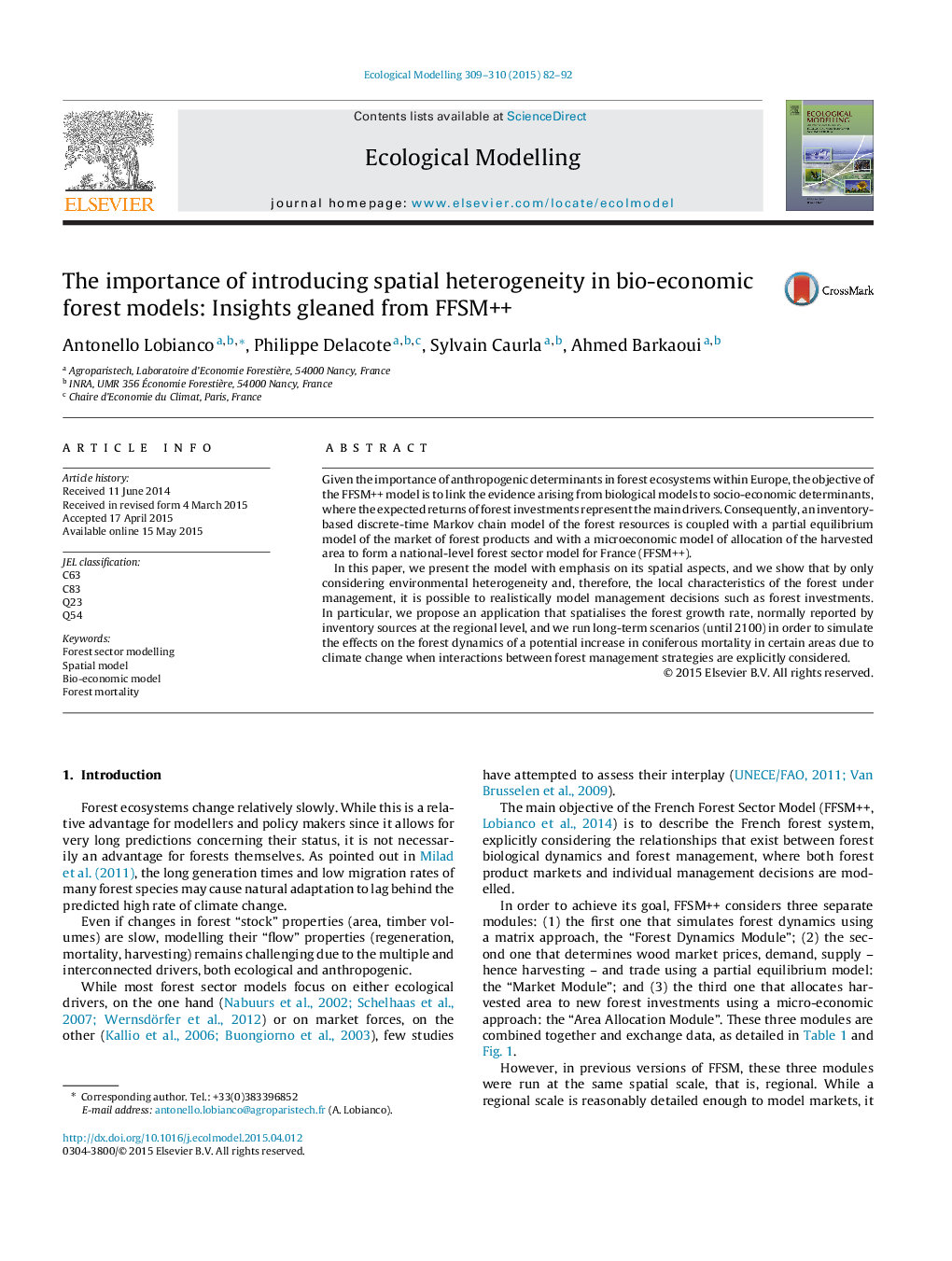| Article ID | Journal | Published Year | Pages | File Type |
|---|---|---|---|---|
| 4375678 | Ecological Modelling | 2015 | 11 Pages |
•We couple a forest dynamic, a market and a management module in a single integrated model.•We add an explicit spatial dimension to the model and we use it to spatialise the forest growth.•We simulate an increased forest mortality as example of an environmental shock.•In our simulations optimal forest management may not show any adaptation measure.•Modelled management response depends on the kind of spatial framework employed.
Given the importance of anthropogenic determinants in forest ecosystems within Europe, the objective of the FFSM++ model is to link the evidence arising from biological models to socio-economic determinants, where the expected returns of forest investments represent the main drivers. Consequently, an inventory-based discrete-time Markov chain model of the forest resources is coupled with a partial equilibrium model of the market of forest products and with a microeconomic model of allocation of the harvested area to form a national-level forest sector model for France (FFSM++).In this paper, we present the model with emphasis on its spatial aspects, and we show that by only considering environmental heterogeneity and, therefore, the local characteristics of the forest under management, it is possible to realistically model management decisions such as forest investments. In particular, we propose an application that spatialises the forest growth rate, normally reported by inventory sources at the regional level, and we run long-term scenarios (until 2100) in order to simulate the effects on the forest dynamics of a potential increase in coniferous mortality in certain areas due to climate change when interactions between forest management strategies are explicitly considered.
